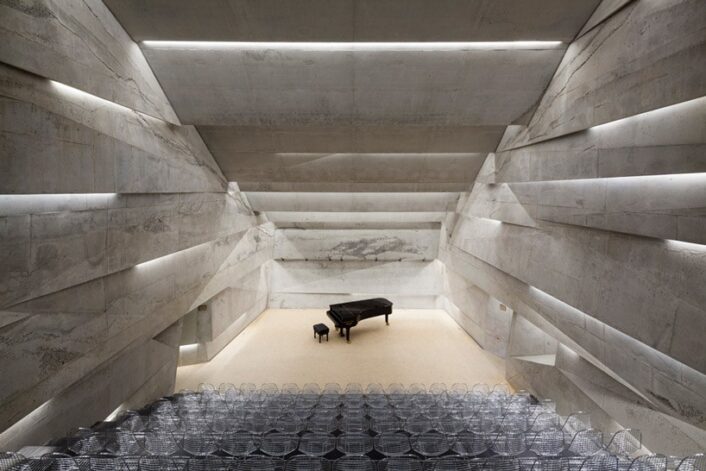Culture
The Schwebebahn train
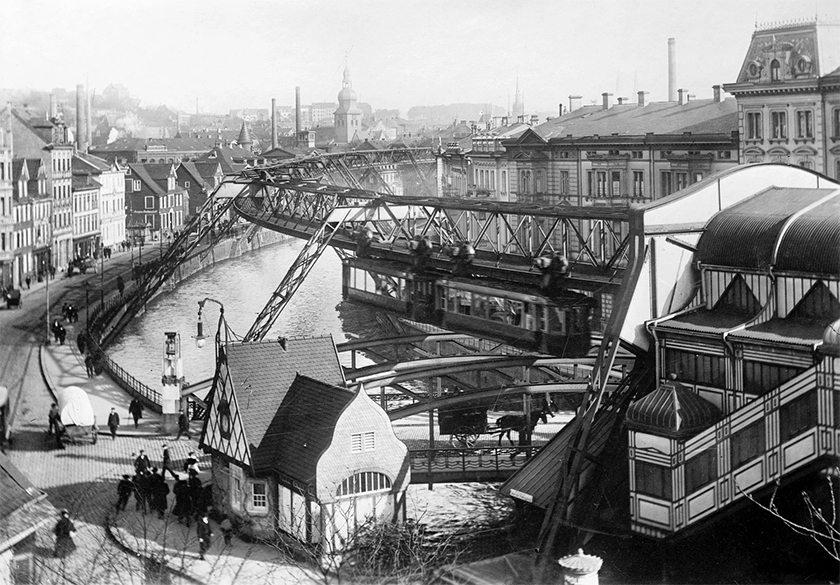
The Wuppertal Suspension Railway, perched above the Wupper River, Wupper. Photograph taken on January 8, 1913.
Image courtesy of: The Atlantic
The story behind the Schwebebahn is long and interesting… with some unexpected twists and turns along the way. Towards the end of the 19th-century, the German two towns of the Upper valley, Elberfeld and Barmen, had become substantial manufacturing hubs.
It was in 1863 when Friedrich Bayer founded a chemical company in Elberfeld. This new industry provided dyes for the region’s numerous textile mills. Industrialization brought on new wealth and a new capitalist class was destined to “leave their mark” on the city by working on civic projects For example, this is when the Elberfeld Zoo was founded.
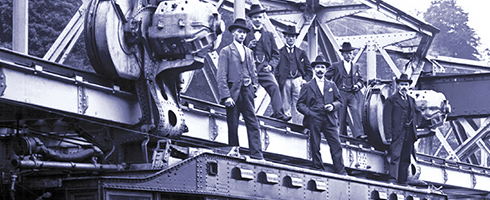
In 1898, employees of construction companies posed for a souvenir photo with a car is suspended, Varresbeck station.
Image courtesy of: Schwebebahn
The success of the zoo caused long traffic jams on weekends and the thriving manufacturing factories required more and more workers who came from further and further away. The city became affluent and the local citizen wanted to engage in all the latest social activities at their disposal. Not interested in using private land for new transportation methods, the idea of an elevated railway over the river was introduced.
Starting in 1901, the privately-funded transit line connected the towns of Elberfeld and Barmen. The line experienced high ridership from the start, and the Schwebebahn quickly became a showpiece for the young German empire.
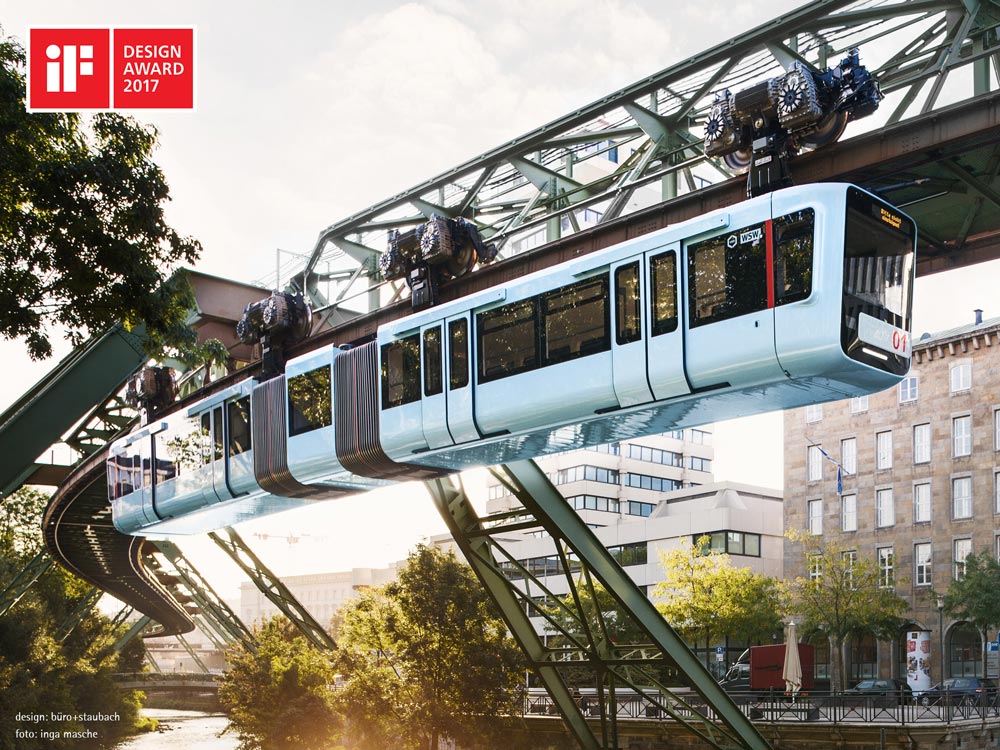
The new suspension railways of Generation 15 has been operational since December 18, 2016. The individual cars are state-of-the-art, very energy-efficient, and follow an updated safety concept.
Image courtesy of: Schwebebahn
The large region encompassing the Upper Valley and the neighboring cities of Dusseldorf and Cologne would today be considered Germany’s “Silicon Valley of its day.” Understandably, new, unique, and experimental technology was tried out here.
The local poet, Else Lasker-Schuler dubbed the new railway the “iron backbone of the city.” As soon as Barmen and Elberfeld were linked via transit, the individual towns realized that it did not make sense for them to proceed as two distinct entities. In 1929, the two merged and became Wuppertal.
The devastation of World War II caused the manufacturing factories to flee the region; but the Schwebabahn continued to link the city to its former “glory days.”

Customers riding the train have an uninterrupted view of the Wupper River which runs throughout the river’s entire length.
Image courtesy of: Ingénieur
The Generation 15 train has a baby-blue exterior and a stark white interior. Currently, the Schwebebahn carries approximately 80,000 passengers through its 13.3 km. railway each weekday. Each train is two cars long with a maximum capacity of 200 people per car. The cars are narrower than conventional train cars allowing for a configuration that is two seats, an aisle, and a solo seat.
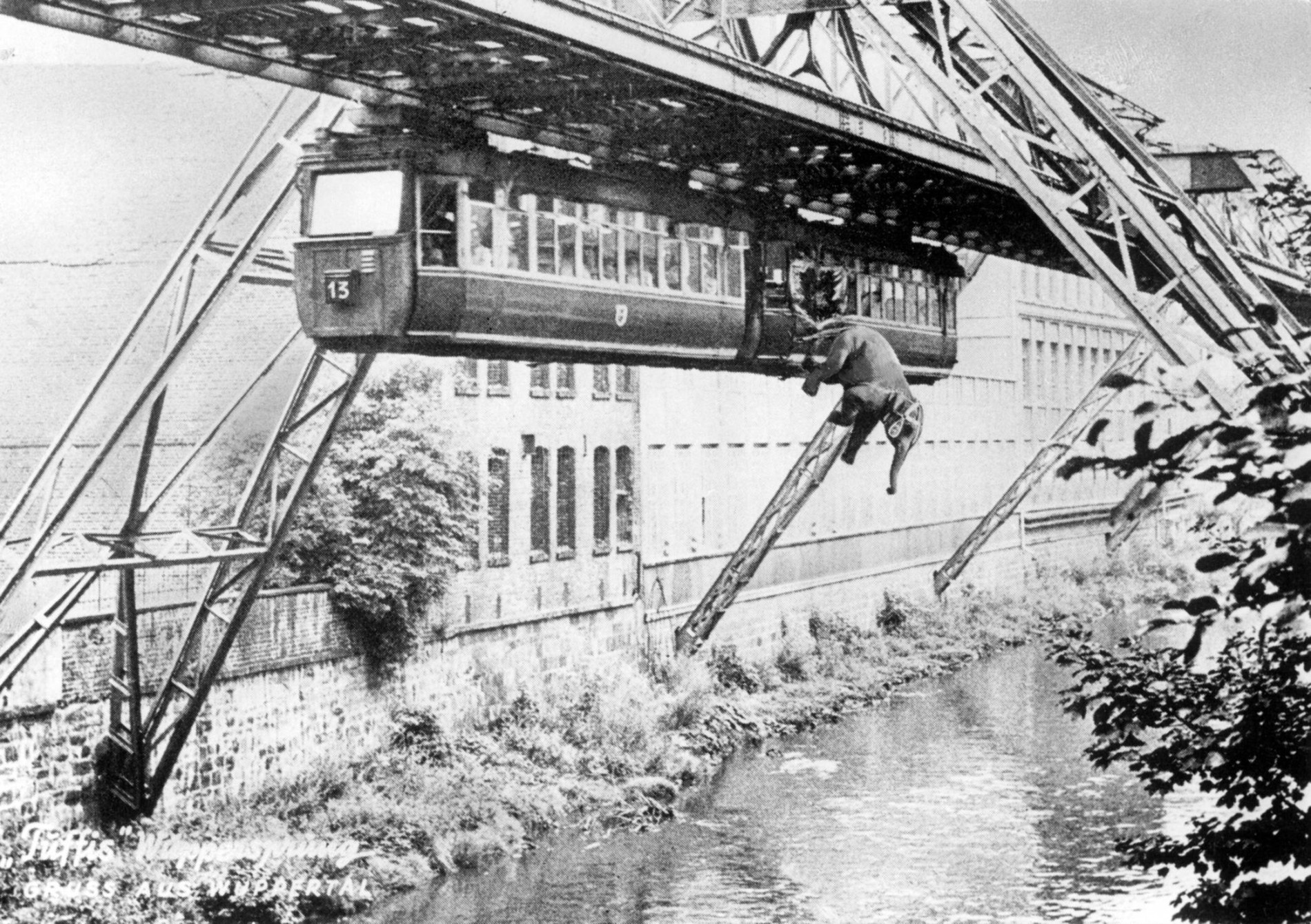
Seeing is believing! What a treat… this unbelievable story was captured on film!
Image courtesy of: Franffurter Allgemeine
Perhaps Schwebebahn’s most famous story occurred in 1950 and involved an elephant. Tuffi, a female circus elephant, fell from the train into the Wupper River below. The four-year-old elephant was made to ride on the suspended monorail as a publicity stunt; however, she panicked. Tuffi trumpeted loudly and ran through the train car, broke a window, and fell almost 40 feet into the river. Luckily, the elephant only suffered minor injuries.
